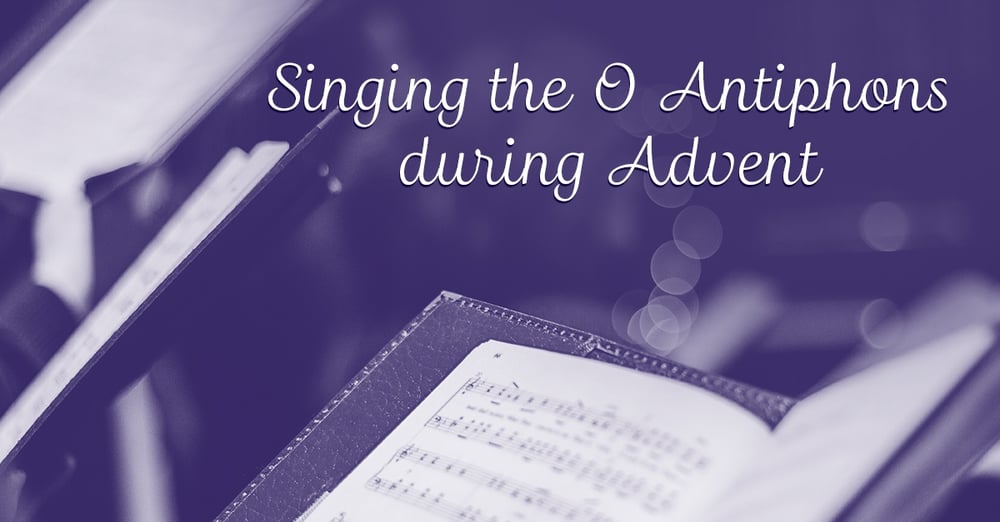During the Advent season, churches may set aside time to reflect on the O Antiphons of Advent through worship and song. What are these O Antiphons and how can church musicians incorporate them into the church’s song this Advent season?
What Are the O Antiphons?
The O Antiphons are seven Scripture-based texts the Church has historically recited during the season of Advent. Although the texts themselves may not be familiar, they were later adapted into the popular Advent hymn “O Come, O Come, Emmanuel” (LSB 357).
Each antiphon begins with the text “O” and is followed by a common name for Christ drawn from Scripture. The texts then go on to describe a unique aspect of our Lord’s salvific work and end with a plea for Him to come. To see this pattern in action, read the text below and listen to the setting by Jonathan Kohrs.
- O Wisdom, proceeding from the mouth of the Most High, pervading and permeating all creation, mightily ordering all things: Come and teach us the way of prudence.
- O Adonai and ruler of the house of Israel, who appeared to Moses in the burning bush and gave him the Law on Sinai: Come with an outstretched arm and redeem us.
- O Root of Jesse, standing as an ensign before the peoples, before whom all kings are mute, to whom the nations will do homage: Come quickly to deliver us.
- O Key of David and scepter of the house of Israel, You open and no one can close, You close and no one can open: Come and rescue the pris’ners who are in darkness and the shadow of death.
- O Dayspring, splendor of light everlasting: Come and enlighten those who sit in darkness and in the shadow of death.
- O King of the nations, the ruler they long for, the cornerstone uniting all people: Come and save us all, whom You formed out of clay.
- O Emmanuel, our king and our Lord, the anointed for the nations and their Savior: Come and save us, O Lord our God.
When Are the O Antiphons Used in Worship?
In the foreword to his collection The Great O Antiphons of Advent, Healey Willan offered the following suggestions for incorporating the O Antiphons into worship during the season of Advent:
The Great O Antiphons of Advent may be used in several ways. They may be sung as originally intended, namely, as antiphons upon the canticle Magnificat in vesper services beginning on December 17, or they may be used as antiphons for the canticles Benedictus and Nunc Dimittis during Advent. In addition they may be used as seasonal liturgical pieces, that is, as “anthems” in the modern sense at any time during Advent.
There is also another way of using these antiphons effectively. During Advent many churches conduct special services. A devotion based on the O Antiphons within the framework of historic vespers will do much to counteract the tendency of many to celebrate the festival of Christmas during the season of Advent.
What Are Some Options for Singing the O Antiphons?
Composer Jeffrey Blersch gives three ideas for singing the O Antiphons during Advent. You can find these in his collection O Antiphons for the Advent Season.
- Sung in alternatim between the choir and the congregation which responds with the appropriate stanza of “Oh, Come, Oh, Come, Emmanuel.”
- The choir may sing selected antiphons in place of the corresponding stanzas of the congregational hymn “Oh, Come, Oh, Come, Emmanuel.”
- The antiphons and congregational singing of “Oh, Come, Oh, Come, Emmanuel” may be used as the basis for a brief Advent service incorporating Scripture and prayer.
We hope this post gives you ideas for incorporating the O Antiphons into your church’s worship services this season! For even more tips on singing the O Antiphons, be sure to check out our settings by Kohrs, Willan, and Blersch.

Quotation from The Great O Antiphons of Advent by Jonathan Kohrs, pages 2–8. Copyright © 2016 Concordia Publishing House. All rights reserved.
Quotation from The Great O Antiphons of Advent—Expanded by Healey Willan, page 3. Copyright © 1958 Concordia Publishing House. All rights reserved.
Quotation from O Antiphons for the Advent Season by Jeffrey Blersch, page 4. Copyright © 2004 Concordia Publishing House. All rights reserved.












.jpg?width=50&height=50&name=IMG_20220621_160541_456%20(1).jpg)
